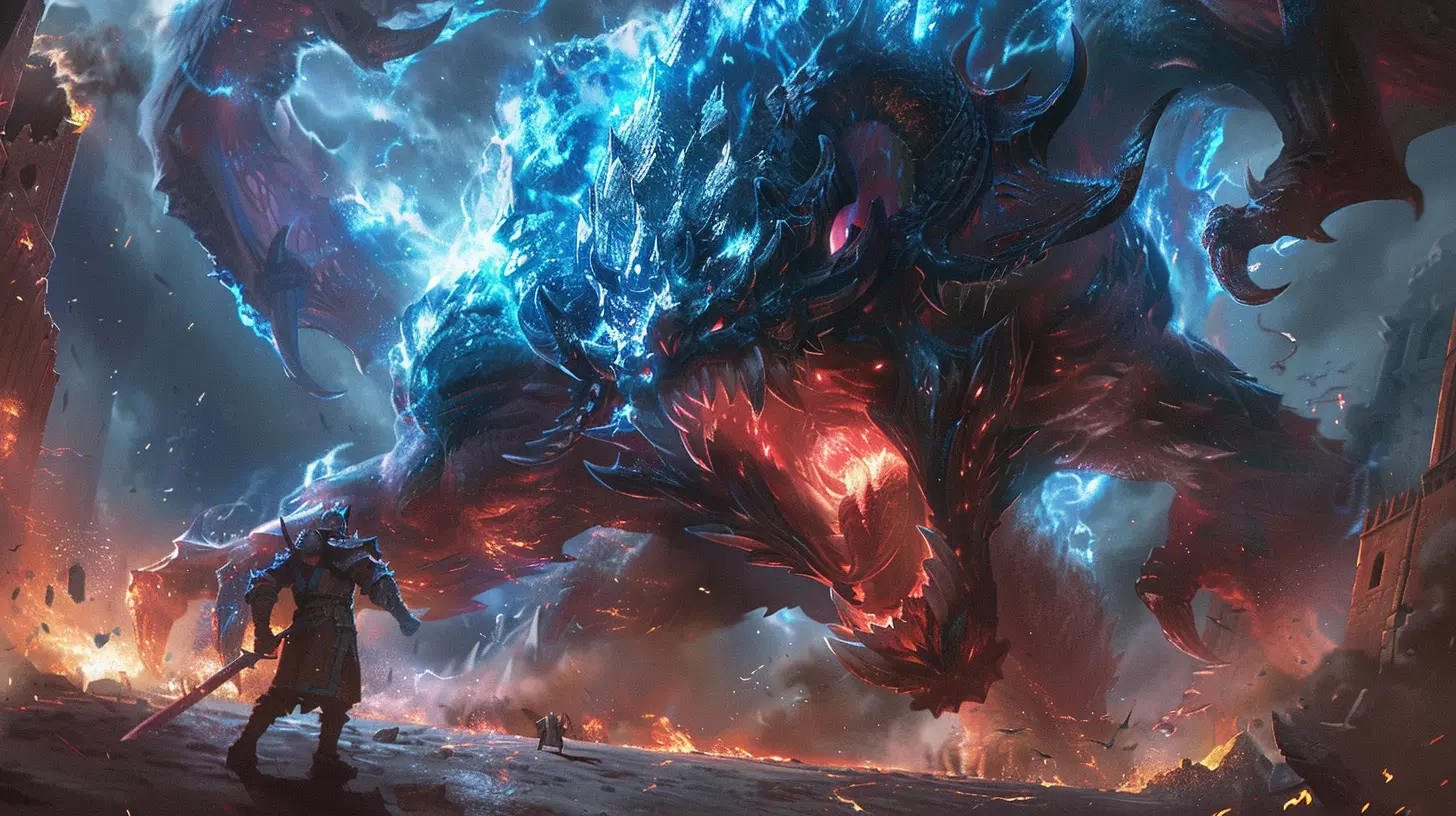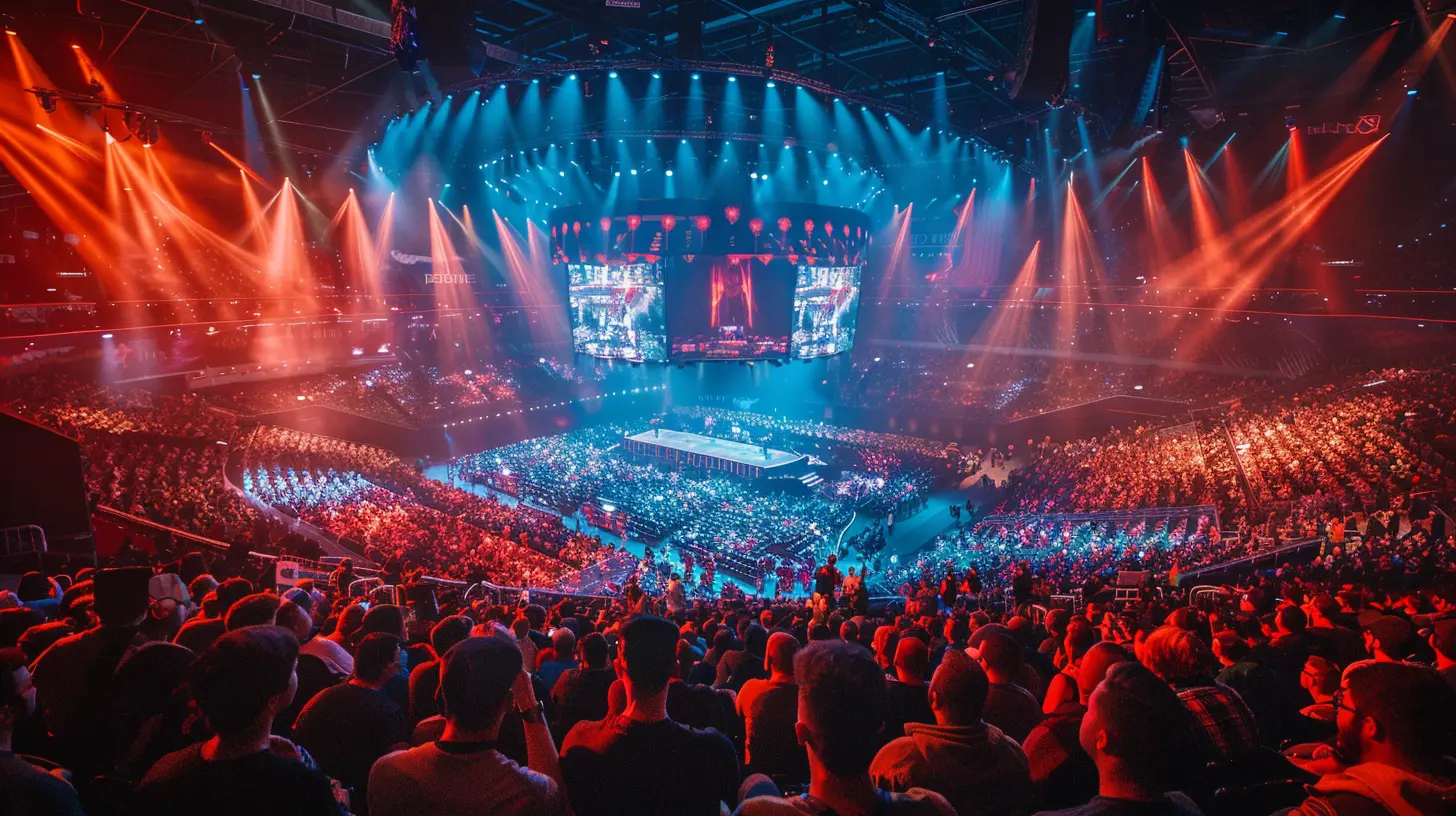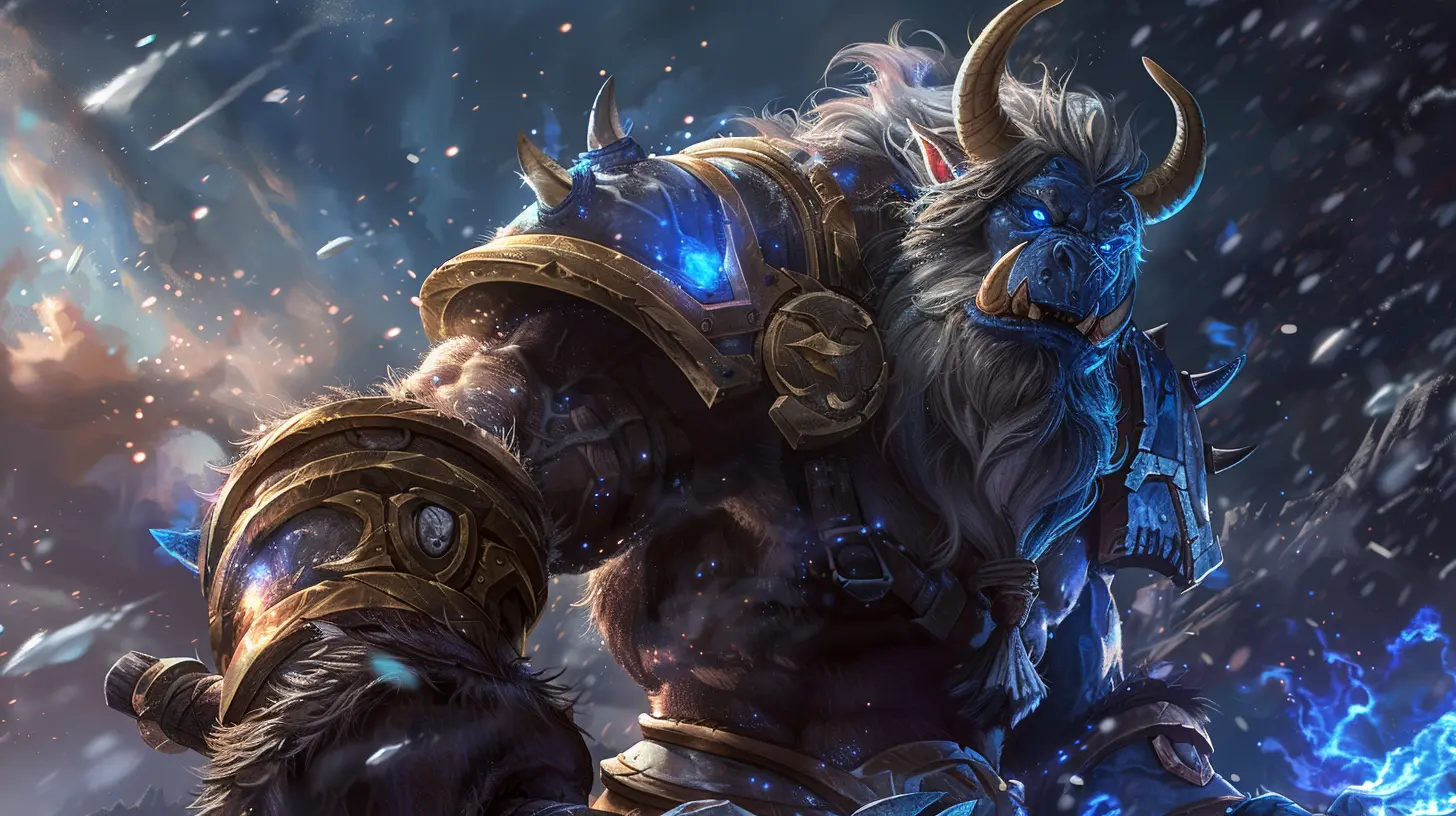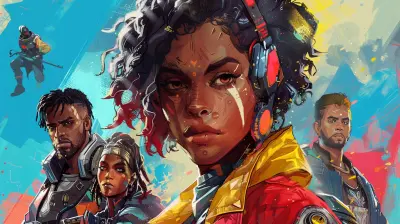The Importance of Patch Updates and Meta Changes in E-Sports
13 October 2025
E-sports have evolved from casual online matches into a multi-billion-dollar global industry. While gameplay skills, team coordination, and strategy are all critical components of competitive gaming, there's another lesser-known factor that plays a massive role in shaping the professional scene: patch updates and meta changes.
You might not think of game patches as game-changers (pun intended), but they absolutely are. In the world of e-sports, a single line of change in a patch note can flip the competitive landscape upside down. So, if you're an aspiring pro, a casual fan, or even just a curious gamer, understanding how these updates shape the industry can give you a whole new appreciation of the e-sports universe.
Let’s break this down and take a closer look.
What Are Patch Updates and Meta Changes, Anyway?
Patch Updates: The Game's DNA Getting Tweaked
Patch updates are essentially software upgrades for the game—like a facelift, but for your digital battlefield. Developers regularly release these patches to:- Fix bugs and glitches
- Adjust game balance (aka "nerf" or "buff" characters, weapons, or abilities)
- Introduce new features or content
- Optimize game performance
These changes might seem minor to the average player, but for pros, they’re a big deal. A single tweak to a character's ability cooldown or weapon damage can mean the difference between a tournament win and an early elimination.
Meta Changes: The Shifting Landscape of Strategy
Now, onto meta changes. "Meta" stands for "Most Effective Tactics Available." It’s basically the unwritten rulebook that teams and players follow to stay ahead of the curve. The meta determines:- Which heroes or champions are considered "viable"
- What formations, strategies, or compositions are powerful
- How the pacing of the game evolves
The meta shifts frequently—sometimes due to patch updates, sometimes due to innovations in strategy. It’s this ever-changing sandbox that keeps the competitive scene alive and exciting.
Why Patch Updates Matter in Competitive Play
1. They Keep the Game Balanced
Let’s be honest—no game is perfectly balanced. Some characters (or weapons) naturally end up being too powerful or too weak. Developers constantly monitor gameplay data and community feedback to make adjustments and keep things fair.In a game like League of Legends or Overwatch, overpowered abilities can completely destroy strategic depth if left unchecked. Patches ensure that no single strategy or character dominates for too long.
Think of it as a digital seesaw—patches keep things level so that the competitiveness stays real.
2. They Prevent Stale Gameplay
Imagine watching the same 5 heroes being picked over and over in every single match. Boring, right?That's what happens when there’s no patch intervention. Patch updates inject fresh life into the game by shaking up the existing meta. They force pro players to adapt, experiment, and innovate. It’s like adding new spices to a stew—you never know what flavor will emerge next.
3. They Level the Playing Field
Sometimes, dominant teams stay ahead simply because they’ve mastered the current meta. A well-timed patch can reset the playing field by nerfing their go-to strategies and forcing everyone to rethink their approach.It’s almost like giving underdogs a fighting chance. Suddenly, new teams can rise, and the competition becomes unpredictable—in the best way possible.
The Ripple Effect of Meta Shifts
1. Meta Influences Hero Picks and Bans
In games with draft systems (like Dota 2 or League of Legends), the meta heavily influences which characters get picked or banned during the selection phase. Pro teams spend hours analyzing the patch to figure out which heroes are "in" and which ones are "out."You’ll often hear casters say something like, “That hero hasn’t been picked in months!”—and boom, suddenly they’re a must-pick in every game because they got a juicy buff in the latest patch.
2. Strategy Evolves Around the Meta
A new meta can dictate training regimens, team compositions, and in-game strategy. For example, if the patch reduces the effectiveness of long-range damage, teams may shift to close combat-heavy comps. Or if mobility gets a buff, expect nimble characters darting across the screen.Everything from when to engage in fights to how to control objectives changes based on the meta. It's like chess, where suddenly the movement of bishops and knights is redefined.
3. Meta Determines the Tempo of a Game
Some metas favor slow, strategic gameplay—others reward fast-paced aggression. When developers adjust things like respawn timers, gold gain, or turret strength, they directly influence how quickly or slowly games unfold.This dictates how pro teams train, what viewers expect, and how commentators break things down.
Real-World Examples of Patches Shaking Up E-Sports
Let’s put theory into context by checking out some iconic meta shifts caused by patch updates in popular e-sports titles.League of Legends: The Juggernaut Patch
Back in 2015, Riot Games released the Juggernaut Update, which overhauled several tanky champions. This completely changed the top lane meta and even altered how teams approached objectives. Suddenly, immobile bruisers were all the rage—and pro players had to learn them fast or risk falling behind.Overwatch: Role Queue and Hero Pools
Blizzard’s introduction of Role Queue and weekly Hero Pools dramatically changed Overwatch’s meta. It standardized team compositions and prevented players from spamming the same few top-tier heroes. This forced flexibility and deeper hero pools from competitive players.Dota 2: 7.00 Patch (A New Era)
When Valve dropped Patch 7.00, it wasn’t just a balance update—it was a full-blown game overhaul. A new hero (Monkey King), talent trees, and UI changes shifted the entire strategic foundation of Dota. Teams that adapted fastest gained a massive edge in the competitive scene.How Patch Updates Affect Pro Teams Behind The Scenes
You might think the action happens only on stage, but patch updates trigger a whirlwind of activity behind the scenes.1. Scrims and Practice Shift Overnight
As soon as a new patch drops, scrims (practice matches) become all about experimentation. Teams test new strategies, draft compositions, and optimal hero matchups. It’s trial by fire, and those who adapt quickly often see results during competitions.2. Analysts and Coaches Go Into Overdrive
Coaches and analysts dive deep into patch notes—not just reading them, but dissecting every line for strategic implications. They create new tier lists, match-up charts, and playbooks. It’s like studying for an exam where the questions change every week.3. Individual Players Must Broaden Their Hero Pool
A player who was dominating with Hero A might suddenly need to master Hero B—ideally within a few days. The most successful pros are the ones who can quickly expand their comfort zone and maintain performance on freshly buffed or nerfed characters.The Viewer Experience: Why Meta Changes Matter to Fans
Patches don’t just shake things up for pros—they keep viewers invested too!1. New Storylines Emerge
Meta changes give rise to new heroes, strategies, and surprise upsets. It's like adding new chapters to an already thrilling book. Suddenly, a mid-tier team comes out of nowhere with a brilliant read on the new patch—and everyone loves a dark horse story.2. Keeps the Viewing Experience Fresh
Watching the same strategy every game can get repetitive. Meta shifts ensure that every tournament feels different and every match unpredictable. It’s like tuning into your favorite show and finding out there's a plot twist every week.3. Boosts Community Engagement
Patch releases are events in themselves. Fans rush to social media, Reddit, and Discord to share opinions, memes, and predictions. It reinvigorates the community and fuels discussion—which is gold for the longevity of any competitive game.The Double-Edged Sword of Frequent Patches
Okay, we’ve been singing patch updates' praises, but let’s keep it real. Too many patches can also be overwhelming—especially for pro players.1. Less Time to Master the Meta
Rapid patch cycles mean less time to develop and polish strategies. This can lead to lower-quality games or unpredictable performances, even from top-tier teams.2. Increased Burnout
Constant adaptation isn’t easy. Players have to grind out hours of practice every time something changes—and that can lead to mental fatigue and burnout.3. Viewers Might Get Lost
When patches are too frequent or too complex, casual viewers may feel disconnected. If they can’t understand why certain heroes are in or out, it makes the spectacle less enjoyable.Conclusion: Adaptation Is the Name of the Game
In the high-stakes world of e-sports, staying still is the fastest way to fall behind. Patch updates and meta changes keep the game fresh, fair, and fiercely competitive. They challenge players to evolve, encourage new strategies, and ensure that no two tournaments are ever the same.If you're diving into e-sports—whether as a player, a coach, a fan, or a content creator—keeping your finger on the pulse of the meta is essential. It’s the hidden layer of depth that fuels every GG, every outplay, and every heart-pounding finale.
So next time you read a patch note, don’t just skim it—study it. You might just catch a glimpse of the next big competitive trend.
all images in this post were generated using AI tools
Category:
E SportsAuthor:

Kaitlyn Pace
Discussion
rate this article
1 comments
Cara Frank
Patch updates and meta changes are crucial in e-sports, as they maintain balance, encourage strategic diversity, and keep gameplay fresh, ultimately enhancing the competitive experience for players and spectators.
October 28, 2025 at 3:44 PM

Kaitlyn Pace
Thank you for your insightful comment! I completely agree—patch updates and meta changes are essential for fostering a dynamic and balanced competitive environment in e-sports.


